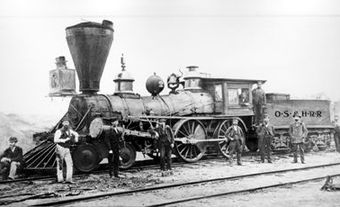There are six time zones in Canada covering four and a half hours. From west to east these time zones are: Pacific, Mountain, Central, Eastern, Atlantic and Newfoundland. From the first Sunday in November to the second Sunday in March these zones are referred to as standard time zones, and may be abbreviated as PST, MST, CST, etc. From the second Sunday in March to the first Sunday in November most of Canada follows daylight saving time. During this summer period the time zones may be abbreviated as PDT, MDT, CDT, etc. The boundaries of the standard time zones are not necessarily the same as those of the corresponding daylight saving time zones. For example, the Mountain time zone includes a portion of northeastern British Columbia in the summer, but not during the winter (see maps below). Boundaries shift because some municipalities choose not to participate in daylight saving time. Similarly, Saskatchewan follows CST year-round and, as of 2020, Yukon follows PDT, also known as Yukon Standard Time, year-round.

How is Time Regulated in Canada?
The official time reference for Canada comes from the National Research Council of Canada (NRC), but, except during wartime, the provinces and municipalities legislate the official time zone boundaries.
Sir Sandford Fleming and Greenwich Mean Time
Up to the 1880s, municipalities used their own local mean solar time. For example, at a latitude of 49°, two municipalities would have differed in time by one minute for each 18 km of east-west separation, with the easternmost municipality having the later time. Everyone agreed on this arrangement when an 18 km journey was considered long, arduous, unpredictable or rare. However, with the advent of railways, the multitude of municipal times became a significant aggravation for travellers. Before he became chief engineer for the Canadian Pacific Railway, Sir Sandford Fleming spent one uncomfortable night in a railway station due to the time confusion when changing trains. Although many other travellers likely had similar experiences, Fleming’s personal experience seemed to inspire his search for a way of reducing confusion about time.
In England, both Dr. William Hyde Wollaston and Abraham Follett Osler promoted a system of universal time. England was the first country to adopt standardized time, with the railways forcing the issue. North American railways experimented with operating each line on uniform time. To reduce the remaining confusion at a union station, where all the lines converged, American Charles Ferdinand Dowd advocated geographic time zones for the railways. Fleming became a strong advocate of time zones to be used for all purposes. In 1883, North American railways adopted hour-wide time zones. Fleming’s advocacy of time zones had its greatest effect in 1884 at an international conference in Washington, DC, called to select a prime meridian to be used for navigation. The conference agreed on Greenwich, England, as the common reference for longitude and time, and attending countries rapidly implemented Fleming’s plan of 24 time zones around the world, each 15° of longitude wide, with the first centred on the Greenwich meridian.
Coordinated Universal Time
Today, the implementation of Greenwich Mean Time is officially referred to as Coordinated Universal Time, or UTC. Time zones in Canada are referred to as UTC-xh. For example, British Columbia time in the winter months is described as UTC-8h, meaning it is eight hours behind Coordinated Universal Time, while Newfoundland time is referred to as UTC-3h30.
Canada, like the rest of the world, now uses a modified version of the time zones created by Sir Sandford Fleming. The boundaries conform to more convenient geographical or political boundaries. In Newfoundland, for example, the time zone differs by 30 minutes from the neighbouring time zones, as opposed to one hour.
Daylight Saving Time
In Canada, as in many middle-latitude countries, Daylight Saving Time (DST) is now commonly used. A pre-breakfast daylight hour can be “saved” for use after supper by the practice of turning the clocks ahead by one hour in the spring and setting them back by one hour in the autumn. It was introduced in Canada by the federal government in 1918 as a measure for increasing war production, emulating legislation in Germany and Britain. (See also Daylight Saving Time in Canada.)

 Share on Facebook
Share on Facebook Share on X
Share on X Share by Email
Share by Email Share on Google Classroom
Share on Google Classroom





